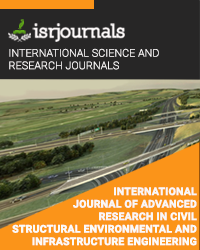groundwater exploration for water well site locations using geophysical survey methods
T.Abdulkadar,P.Naveen
Published in International Journal of Advanced Research in Civil,Structural,Environmental and Infrastructure Engineering and Developing
ISSN: 2320-723X Impact Factor:1.7 Volume:3 Issue:1 Year: 13 March,2017 Pages:436-440

Abstract
Groundwater can be encountered in various modes of occurrence. Groundwater exploration is the investigation of underground formations to understand the hydrologic cycle, know the groundwater quality, and identify the nature, number and type of aquifers. There are different groundwater exploration methods. One of the surface geophysical methods is therefore the vertical electrical sounding method. Vertical electrical sounding (VES) is one to provide valuable information regarding the vertical successions of subsurface geo-materials in terms of their individual thicknesses and corresponding resistivity values. The objective of this study was therefore to locate two well site locations using surface geophysical methods for water supply purposes.The wellpoints are installed by jetting them into the ground.
Kewords
Groundwater exploration, Geophysical survey, Water well, Haramaya University, Lake Haramaya watershed
Reference
1. Al-garni MA (2009) Geophysical Investigations for Groundwater in a Complex Subsurface Terrain, Wadi Fatima, KSA: A Case History. Jordan Journal of Civil Engineering 3: 118-136. 2.Venkata Rao G, Kalpana P, Rao RS (2014) Groundwater Investigation Using Geophysical Methods-A Case Study of Pydibhimavaram Industrial Area. International Journal of Research in Engineering and Technology 3: 13-17. 3.Oyedele EAA, Olayinka AI (2012) Statistical Evaluation of Groundwater Potential of Ado-Ekiti, Southwest, Nigeria. Transnational Journal of Science and Technology 2: 110-127. 4.Ojoina OA (2014) Hydrogeophysical Investigation for Groundwater in Lokoja Metropolis, Kogi State, Central Nigeria.Journal of Geography and Geology 6: 1-10. 5.Jansen JR (2011) Geophysical Methods to Map Brackish and Saline Water in Aquifers. In Georgia Water Resources Conference. Florida: University of Georgia. 6.Shemelis G (2003) Performance Evaluation of Small Scale Irrigation Practices in Lake Alemaya Watershed and Methods of Improving Water Application Efficiency. 7.Kebede S (2013) Groundwater in Ethiopia, Features, Numbers and Opportunities. Springer Hydrogeology, Heidelberg, New York, Dordrecht, London. 8.Adem S (2012) Groundwater resource evaluation and sustainable management in Adelle and Haramaya dry Lake Catchment, eastern Ethiopia. 9.Zeru G, Alamirew T, Tadesse N, Olmana M (2015) Aquifer Characterization and Parameter Estimation of Haramaya Well Field from Surface Geophysical Method.Haramaya,Oromiya National Regional State. 10.Tesfaye C (1993) Hydrogeology of Ethiopia and water Resources Development, Ethiopian Institute of Geological Surveys, Ministry of Mines and Energy. Addis Ababa. 11.Haramaya University (2013) Participatory Integrated Development of Lake Haramaya Watershed, project proposal.

